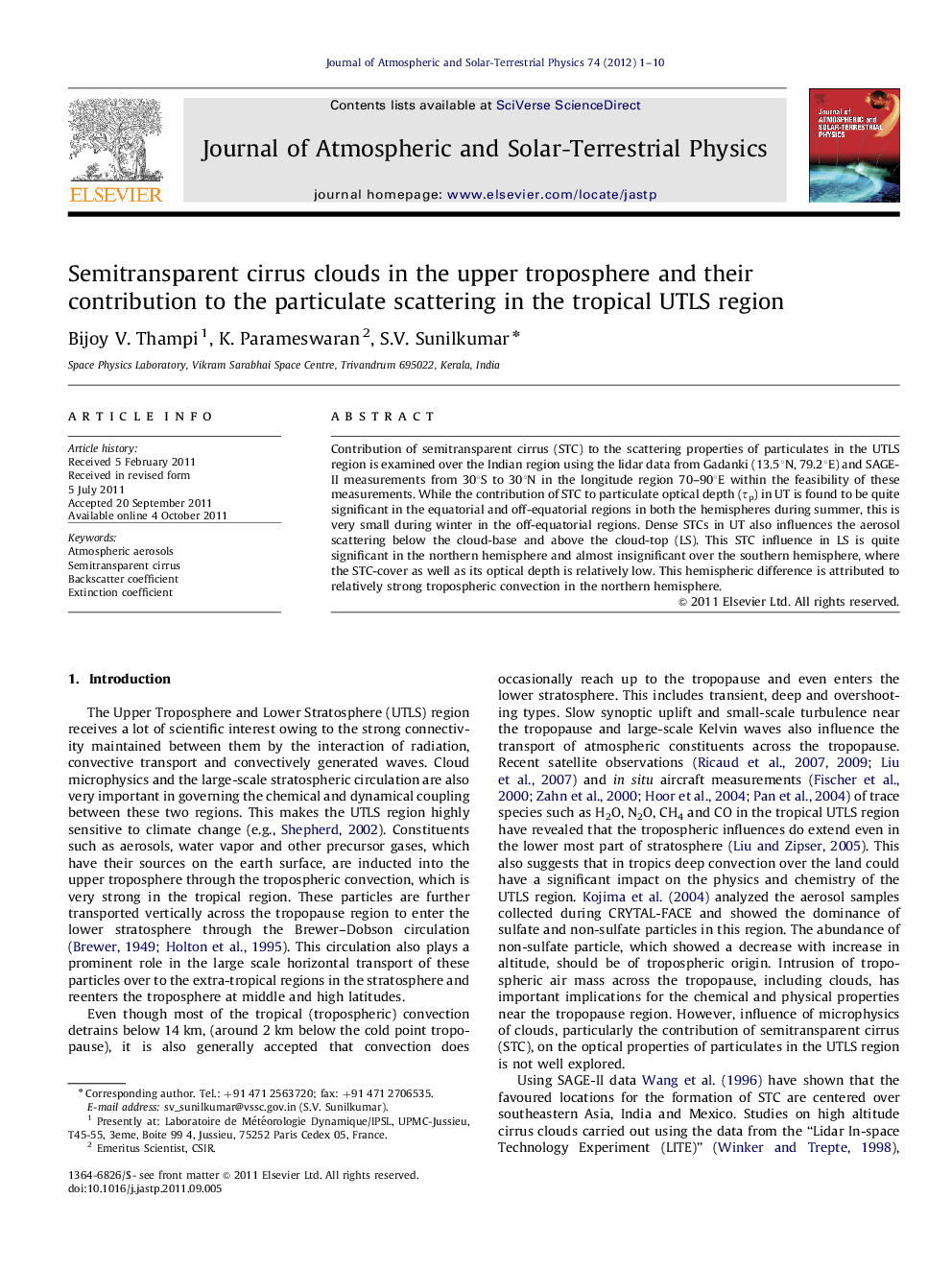| Article ID | Journal | Published Year | Pages | File Type |
|---|---|---|---|---|
| 1777042 | Journal of Atmospheric and Solar-Terrestrial Physics | 2012 | 10 Pages |
Contribution of semitransparent cirrus (STC) to the scattering properties of particulates in the UTLS region is examined over the Indian region using the lidar data from Gadanki (13.5°N, 79.2°E) and SAGE-II measurements from 30°S to 30°N in the longitude region 70–90°E within the feasibility of these measurements. While the contribution of STC to particulate optical depth (τp) in UT is found to be quite significant in the equatorial and off-equatorial regions in both the hemispheres during summer, this is very small during winter in the off-equatorial regions. Dense STCs in UT also influences the aerosol scattering below the cloud-base and above the cloud-top (LS). This STC influence in LS is quite significant in the northern hemisphere and almost insignificant over the southern hemisphere, where the STC-cover as well as its optical depth is relatively low. This hemispheric difference is attributed to relatively strong tropospheric convection in the northern hemisphere.
► STCs significantly contribute to optical scattering in the UT region. ► Dense STCs in the UT region influence aerosol scattering above and below the cloud. ► IGWs originating from deep convection during ASM transports particulates to LS region. ► B–D circulation could be playing an important role in the troposphere–stratosphere exchange during winter.
